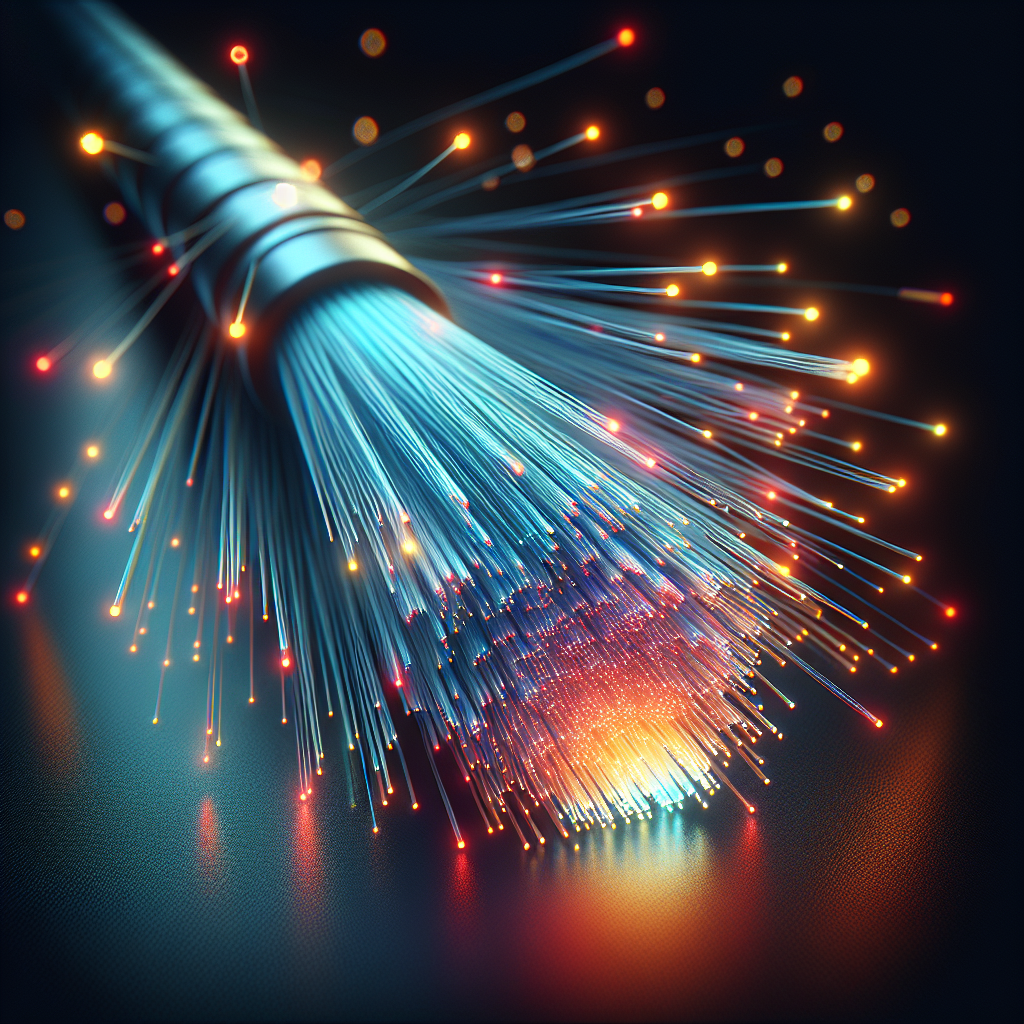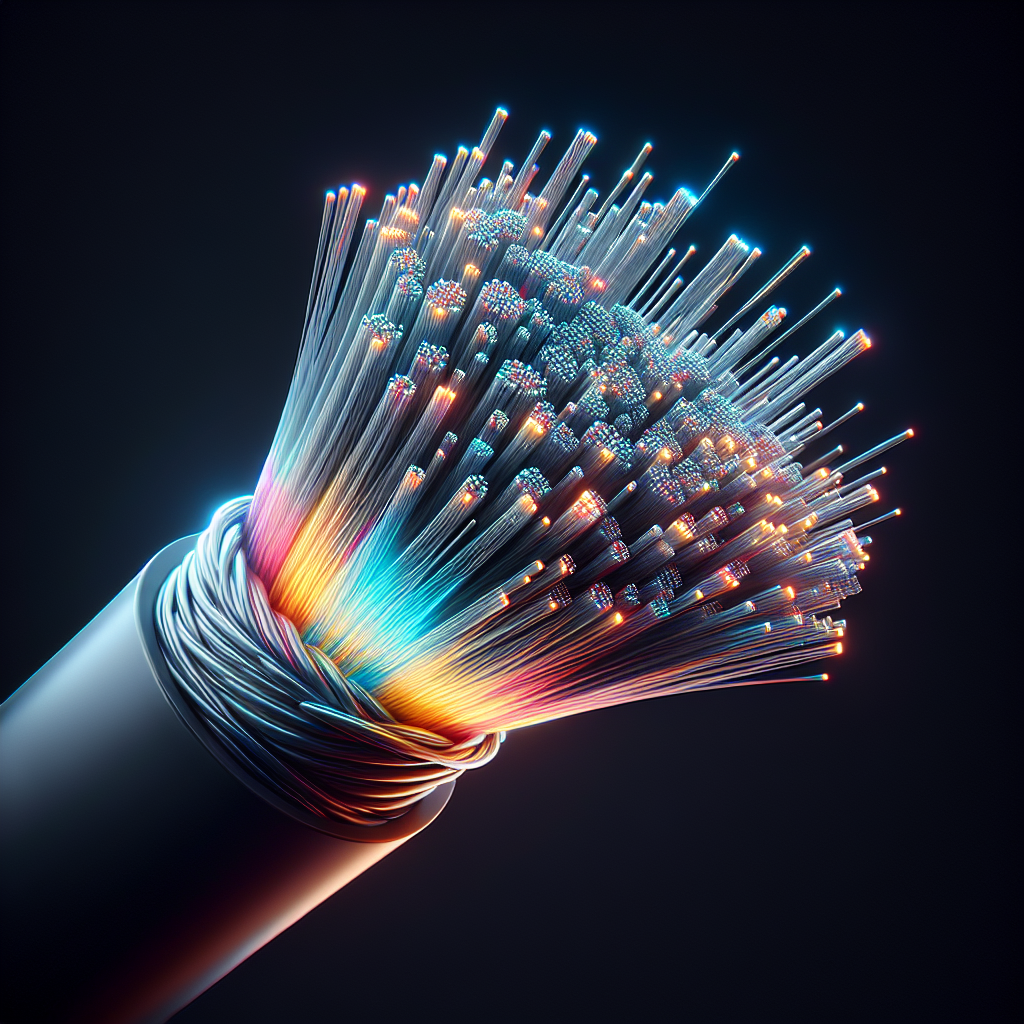When it comes to the rapidly evolving world of telecommunications, fiber optic cables play a crucial role. These cables, known for their high-speed data transmission capabilities and reliability, are the backbone of modern communication networks. The demand for robust and efficient fiber optic infrastructure has led to the emergence of numerous companies specializing in the manufacturing of these essential components.
Fiber optic cable manufacturers are at the forefront of technological innovation, constantly striving to improve the quality, efficiency, and durability of their products. These companies invest heavily in research and development to stay ahead in a competitive market, ensuring they provide the best possible solutions for their customers.
Understanding the key players in the industry can help businesses and consumers make informed decisions when selecting fiber optic products for their needs. In this article, we will delve into the top companies that manufacture fiber optic cable, examining their contributions to the industry and their commitment to excellence.
**Visit our website to learn more and get started today! Click here.**
Global Leaders in Fiber Optic Cable Production

The fiber optic cable industry is dominated by a handful of global leaders who have established themselves as pioneers in this field. These companies have a significant market share and are known for their high-quality products, cutting-edge technology, and comprehensive customer support.
Corning Inc., an American multinational, is widely regarded as a leader in the manufacture of fiber optic cables. With a rich history dating back to the 1800s, Corning has been at the forefront of innovation in materials science. Their optical fiber products are used in various applications, including telecommunications, medical devices, and data centers.
Another major player is Prysmian Group, an Italian company known for its extensive portfolio of fiber optic solutions. As one of the largest cable manufacturers in the world, Prysmian Group serves a diverse range of industries, providing customized solutions that meet specific customer requirements.
Furukawa Electric, a Japanese conglomerate, is also a significant name in the fiber optic cable market. The company boasts advanced manufacturing facilities and a strong focus on research and development, ensuring they stay ahead of technological advancements.
Lastly, Sumitomo Electric from Japan is renowned for its high-performance optical fiber products. Sumitomo Electric’s commitment to quality and innovation has earned them a solid reputation in the industry.
These global leaders not only set the benchmark for quality and reliability but also continuously push the boundaries of what is possible in fiber optic technology. Their contributions have been instrumental in shaping the future of telecommunications and data transmission.
Innovative Technologies in Fiber Optics

In the realm of fiber optics, innovation is the driving force behind advancements that enhance transmission speeds, efficiency, and reliability. Cutting-edge technologies have revolutionized the way we perceive and utilize fiber optic cables, thereby transforming various industries.
One of the most groundbreaking innovations is the development of bend-insensitive fibers. These fibers are designed to maintain signal integrity even when bent at sharp angles, making them ideal for complex installations in cramped spaces. This technology has significantly reduced signal loss and enhanced the durability of fiber optic networks.
Another noteworthy advancement is the advent of dense wavelength division multiplexing (DWDM). DWDM technology allows multiple data signals to be transmitted simultaneously over a single optical fiber by using different wavelengths (or colors) of laser light. This has dramatically increased the bandwidth capabilities of fiber optic cables, enabling the transmission of vast amounts of data over long distances without significant loss.
Photonic integrated circuits (PICs) are also making waves in the fiber optics industry. These circuits integrate multiple optical functions onto a single chip, akin to how electronic integrated circuits work. PICs have the potential to drastically reduce the size, cost, and power consumption of fiber optic communication systems.
Additionally, fiber-to-the-home (FTTH) technology has been a game-changer in providing high-speed internet access directly to residential customers. This technology replaces traditional copper lines with optical fibers, offering unparalleled speed and reliability for internet connectivity.
The continuous evolution of these technologies underscores the importance of fiber optics in our increasingly connected world. As research and development efforts persist, we can anticipate even more innovative solutions that will further enhance the capabilities and applications of fiber optic cables.
Market Share and Industry Impact
The fiber optics market has experienced exponential growth over the past decade, driven by the increasing demand for high-speed internet and reliable communication networks. This surge is largely attributed to the pivotal role fiber optics play in advancing telecommunications, data centers, and broadband services.
Key players in this industry, such as Corning Inc., Prysmian Group, and OFS Fitel, have dominated the market by continually innovating and expanding their product lines. These companies have invested heavily in research and development, leading to significant advancements in fiber optic technology and cementing their positions as market leaders.
The impact of fiber optics on various industries cannot be overstated. In telecommunications, fiber optic cables have replaced traditional copper wires, providing faster and more reliable data transmission. This has facilitated the growth of high-speed internet services, enabling seamless streaming, cloud computing, and other bandwidth-intensive applications.
Data centers, which are critical for storing and managing vast amounts of information, have also benefited immensely from fiber optics. The high bandwidth and low latency offered by fiber optic cables have enhanced data transfer rates and operational efficiency, supporting the ever-growing needs of businesses and consumers alike.
Moreover, the healthcare industry has seen significant improvements due to the adoption of fiber optic technology. High-speed networks have enabled the rapid transmission of large medical files, such as MRI scans and X-rays, improving diagnostic accuracy and patient care. Additionally, fiber optics are being used in advanced medical equipment, such as endoscopes, to provide clearer and more precise imaging.
The global adoption of fiber optics is also contributing to the development of smart cities. These urban areas leverage high-speed networks to connect various systems, such as traffic management, public safety, and utilities, enhancing the quality of life for residents and optimizing resource usage.
As the demand for faster, more reliable communication continues to grow, the fiber optics market is poised for sustained expansion. Companies that manufacture fiber optic cable will continue to play a crucial role in shaping the future of connectivity, driving technological advancements, and impacting a wide range of industries.
Sustainability Practices in Fiber Optic Manufacturing

As environmental awareness grows, companies that manufacture fiber optic cable are increasingly adopting sustainability practices to minimize their ecological footprint. These practices are not only essential for preserving the environment but also for meeting the demands of consumers and regulators who prioritize eco-friendly initiatives.
A primary focus for many manufacturers is the reduction of carbon emissions. Companies like Prysmian Group and Corning Inc. are investing in energy-efficient technologies and renewable energy sources to power their manufacturing processes. By doing so, they aim to cut down on greenhouse gas emissions and reduce their overall carbon footprint.
Another significant aspect of sustainability in fiber optic manufacturing is waste management. The production of fiber optic cables generates waste materials, some of which can be harmful to the environment if not handled correctly. Leading manufacturers are implementing comprehensive recycling programs to manage waste effectively. This includes recycling glass and plastic materials used in fiber optics and safely disposing of any hazardous substances.
Water conservation is also a critical component of sustainable manufacturing practices. Fiber optic production often requires substantial amounts of water for cooling and cleaning processes. To address this, companies are adopting advanced water recycling and purification systems to minimize water usage and reduce waste.
Additionally, several manufacturers are focusing on the development of eco-friendly products. This involves using materials that are less harmful to the environment and designing cables that are easier to recycle at the end of their lifecycle. For instance, some companies are exploring the use of biodegradable materials in cable sheathing and insulation.
Supplier sustainability is another area of concern. Leading companies are increasingly demanding that their suppliers adhere to strict environmental standards. This ensures that the entire supply chain is committed to sustainability, from raw material extraction to the final product.
Moreover, sustainability certifications and standards are becoming more prevalent in the industry. Certifications such as ISO 14001, which focuses on environmental management systems, help companies demonstrate their commitment to sustainable practices. Achieving these certifications not only enhances a company’s reputation but also provides a competitive edge in a market that increasingly values sustainability.
Incorporating sustainability into fiber optic manufacturing is not without its challenges. It requires significant investment and a shift in traditional manufacturing practices. However, the long-term benefits, both for the environment and for the companies themselves, make it a worthwhile endeavor. By embracing sustainability, fiber optic manufacturers are not only contributing to a healthier planet but also positioning themselves as leaders in an evolving and conscientious industry.
Future Trends in Fiber Optic Technology

The landscape of fiber optic technology is continually evolving, driven by the demand for higher speeds, increased bandwidth, and more reliable connections. As we look to the future, several key trends are poised to shape the industry and redefine how we think about data transmission.
One of the most exciting developments in fiber optics is the advent of 5G technology. As 5G networks become more widespread, the need for robust fiber optic infrastructure will grow exponentially. Fiber optics will play a critical role in supporting the high-speed, low-latency requirements of 5G, enabling innovations in various fields such as the Internet of Things (IoT), autonomous vehicles, and smart cities.
Another trend to watch is the ongoing advancements in fiber optic sensing. This technology allows for real-time monitoring of physical conditions such as temperature, pressure, and strain along the length of the fiber. Applications for fiber optic sensing are vast, ranging from structural health monitoring in bridges and buildings to enhanced security systems and even medical diagnostics.
Quantum communications represent a significant leap forward in fiber optic technology. Quantum fibers, which leverage the principles of quantum mechanics, promise ultra-secure data transmission that is virtually immune to hacking. This groundbreaking technology is still in its nascent stages, but it holds the potential to revolutionize industries that require highly secure communications, such as finance and defense.
The integration of artificial intelligence (AI) and machine learning (ML) into fiber optic networks is another trend gaining traction. AI and ML can optimize network performance, predict and prevent failures, and enable more efficient data routing. These technologies will not only enhance the reliability and efficiency of fiber optic networks but also pave the way for smarter, more adaptive communication systems.
As data centers continue to expand, the demand for high-capacity fiber optic cables will increase. Innovations in multi-core fiber and space-division multiplexing (SDM) are set to address this need by significantly boosting the data-carrying capacity of fiber optic cables. These advancements will support the ever-growing volume of data generated by cloud computing, big data analytics, and streaming services.
Another area of focus is the development of eco-friendly fiber optic solutions. As discussed in our previous section, sustainability is becoming a critical consideration for both manufacturers and consumers. Future trends will likely see the rise of biodegradable and recyclable fiber optic components, as well as more energy-efficient manufacturing processes.
Finally, the concept of fiber to the home (FTTH) will continue to gain momentum. With the increasing need for high-speed internet in residential areas, FTTH deployments are expected to rise. This trend will not only enhance the quality of internet services available to consumers but also drive economic growth by facilitating better access to digital resources.
The future of fiber optic technology is undeniably bright, with innovations that promise to transform various sectors and improve the way we communicate. Staying ahead of these trends is crucial for businesses and individuals alike.
Visit our website to learn more and get started today! Click here.

